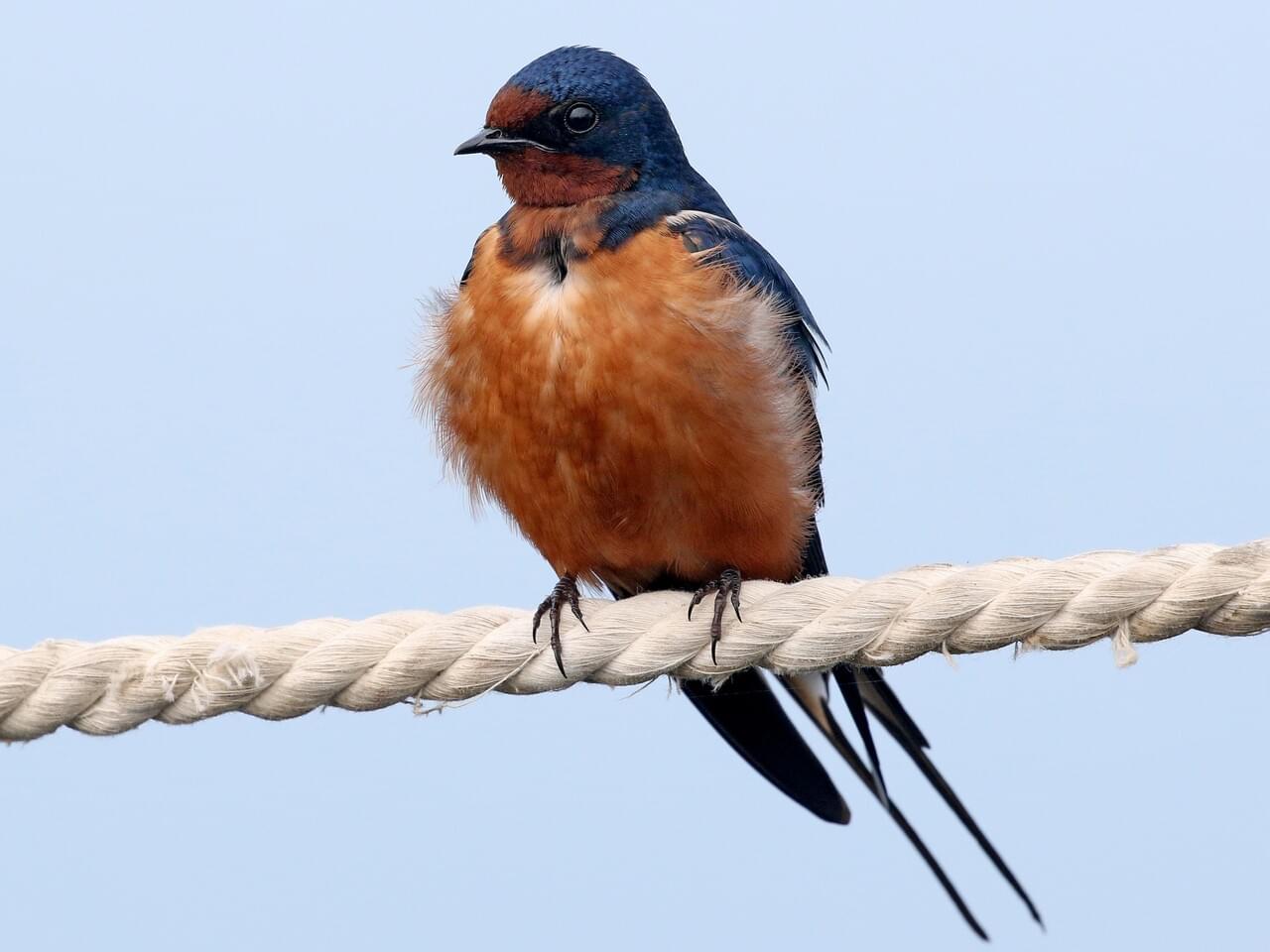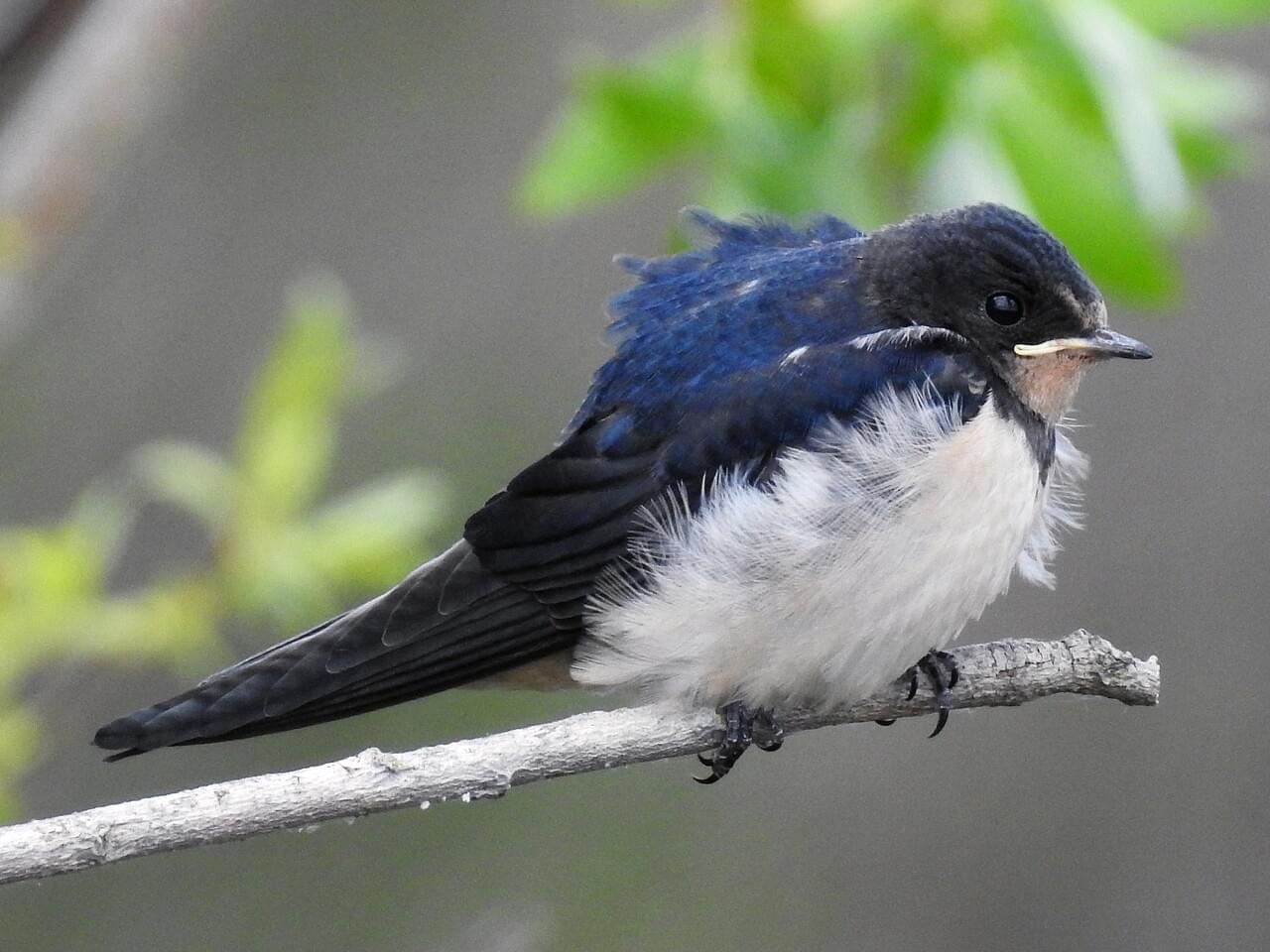 Photo ©
Liz Clayton Fuller
Photo ©
Liz Clayton Fuller
Barn Swallow
Main Focal Species
Glistening cobalt blue above and tawny below, Barn Swallows dart gracefully over fields, barnyards, and open water in search of flying insect prey. Look for the long, deeply forked tail that streams out behind this agile flyer and sets it apart from all other North American swallows. Barn Swallows often cruise low, flying just a few inches above the ground or water. True to their name, they build their cup-shaped mud nests almost exclusively on human-made structures.
Range

Habitat
Barn Swallows forage in open areas throughout most of the continent, including suburban parks and ball fields, agricultural fields, beaches, and over open water such as lakes, ponds and coastal waters. They range from sea level up to 10,000 feet. Breeding habitat must include open areas for foraging, structures or cliffs to build nests on, and a source of mud such as a riverbank to provide the material for building nests.
Food
Flies of all types make up the majority of the Barn Swallow’s diet, along with beetles, bees, wasps, ants, butterflies, moths, and other flying insects. Barn Swallows usually take relatively large, single insects rather than feeding on swarms of smaller prey. They will also pick up grit and small pebbles, or eggshells and oyster shells set out by humans, which may help the birds digest insects or add needed calcium to the diet.
Behavior
Watch for the Barn Swallow’s smooth, fluid wingbeats and the way they pull their wingtips back at the end of each stroke. These birds feed almost exclusively in flight, flying lower than many other swallow species and often nearly hugging the ground or water surface. They catch flies and other prey in midair above fields, marshes, lakes, and coastal waters, and often follow farm implements, cattle herds, and humans to snag flushed insects. They occasionally feed on sluggish or dead insects on the ground, and in cold weather will pluck flies off barn walls. Barn Swallows also drink and even bathe on the wing, dipping down to take a mouthful of water or touch their belly to the surface for a quick rinse. Males defend a small territory around the nest site and aggressively chase away other males, even grabbing them with their feet and tumbling to the ground. Individuals or groups of Barn Swallows mob predators such as hawks, gulls, or grackles that approach nests.
Nesting
Both male and female build the nest cup using mud. They collect mud in their bills and often mix it with grass stems to make pellets. They first construct a small shelf to sit on, then build up the nest’s sides. If built against a wall or other vertical surface the result is a semicircular, half-cup shape. Nests built on top of a beam or other horizontal surface form a complete cup about 3 inches across at the rim and 2 inches deep. The birds line the cup first with grass, then feathers, and in colonies may steal nest-lining materials from neighboring nests. When reusing nests, Barn Swallows clean out old feathers and add new mud to the nest’s rim.
Appearance
Typical Sound

© Dave Herr / Macaulay Library
Size & Shape
When perched, the sparrow-sized Barn Swallow appears cone shaped, with a slightly flattened head, no visible neck, and broad shoulders that taper to long, pointed wings. The tail extends well beyond the wingtips and the long outer feathers give the tail a deep fork.
Color Pattern
Barn Swallows have a steely blue back, wings, and tail, and rufous to tawny underparts. The blue crown and face contrast with the cinnamon-colored forehead and throat. White spots under the tail can be difficult to see except in flight. Males are more boldly colored than females.
Plumage Photos
Similar Species
None of the other North American swallows have tails as deeply forked as the Barn Swallow. Tree Swallows and Violet-green Swallows are bright white below from throat to belly. Cliff Swallows share the Barn Swallow's glossy blue upperparts and rusty throat, but the forehead is pale and the rump (just above the tail) is creamy. Chimney Swifts and Vaux's Swifts are smaller with narrower, more curved wings and much stiffer wingbeats. They are entirely dark and tend to fly much higher than Barn Swallows.
Did you know?!
- The Barn Swallow is the most widely distributed and abundant swallow in the world.
- When feeding their nestlings, swallows carry several insects at a time to the nest, packing them together into a ball that they carry in their throats. A pair of swallows may bring up to 400 separate meals per day to their nestlings.
- Barn Swallows originally nested in caves, but now nests almost exclusively on man-made structures.
- The Barn Swallows' close association with humans has given it a prominent place in folklore. Legend has it that the Barn Swallow consoled Christ on the cross and got its forked tail because it stole fire from the gods to bring to people, losing its middle tail-feathers when a wrathful deity hurled a firebrand at it.
- Female Barn Swallows prefer to mate with males that have the longest and most symmetrical tails.

















